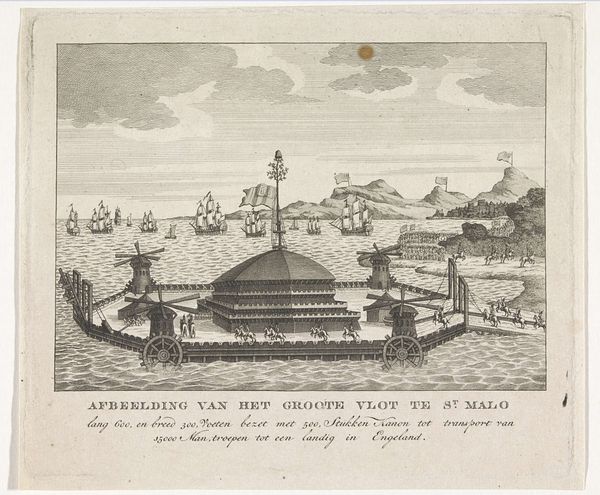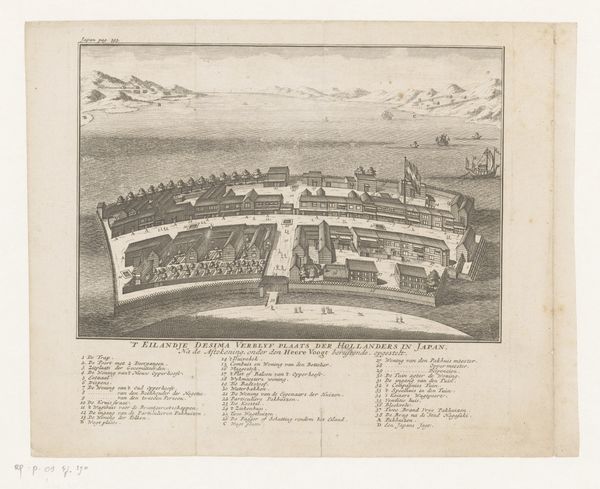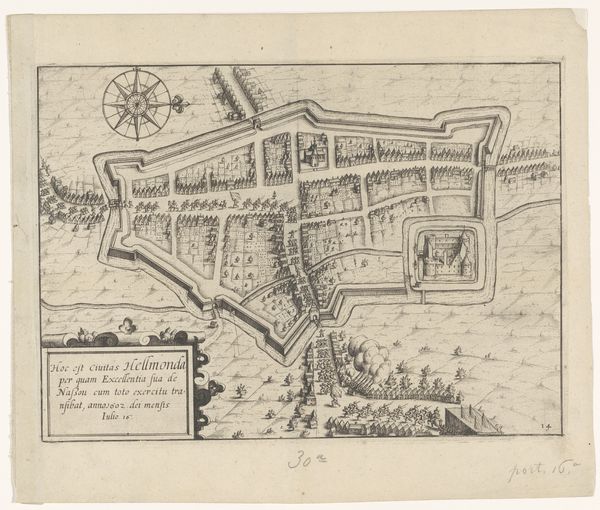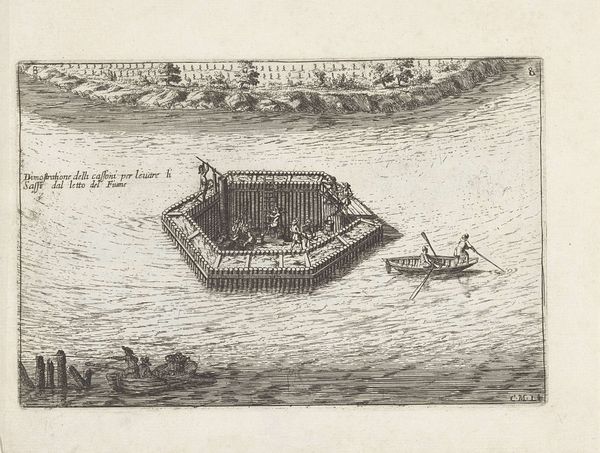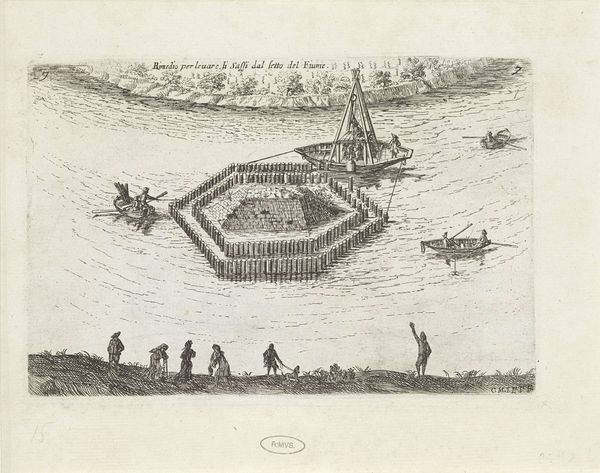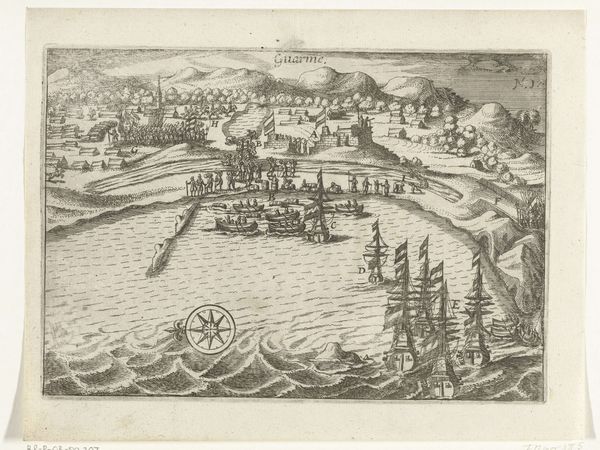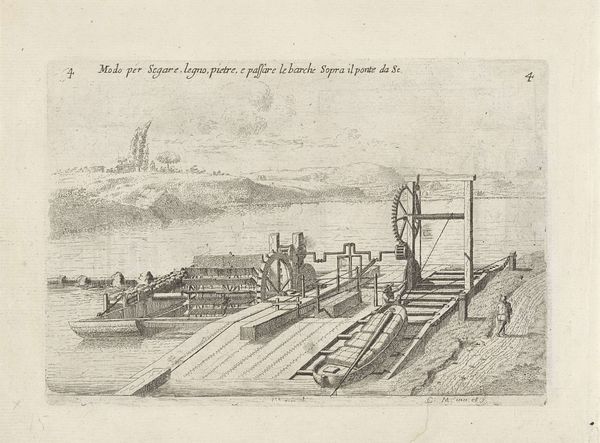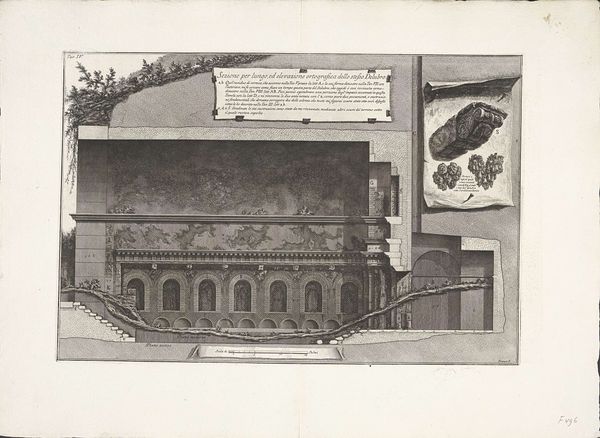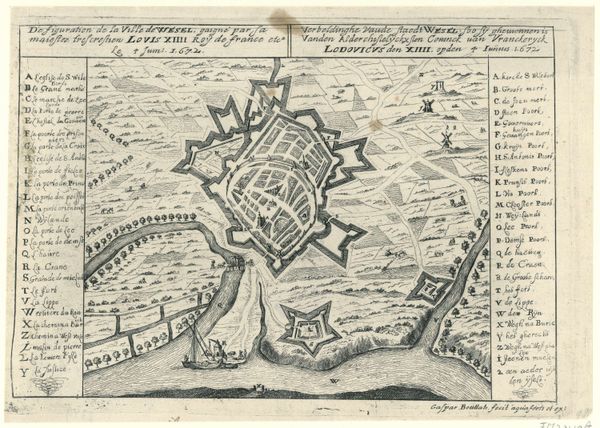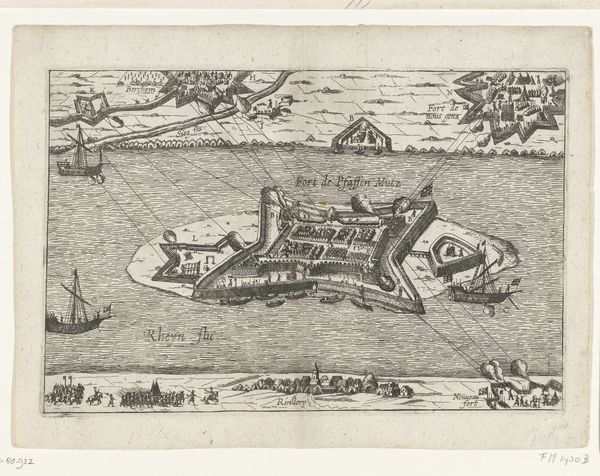
Dimensions: height 272 mm, width 453 mm
Copyright: Rijks Museum: Open Domain
Daniël Vrijdag created this print of the ‘Float of Saint-Malo’ in 1797. Notice how the detailed lines and careful composition give the print a very structured, almost architectural feel. The focus is on the geometric shapes, like the large dome in the center and the cylindrical windmills. The artist juxtaposes the imposing structure with the vastness of the sea and sky, creating a sense of scale and ambition. Structurally, the print can be interpreted through the lens of semiotics. The float itself acts as a signifier of military might and engineering prowess. The detailed depiction of the ship’s mechanics invites us to consider the cultural codes of 18th-century naval power. The choice to focus on form and function rather than the human element creates a discourse around technology and control. Ultimately, the print challenges established meanings of naval warfare. By representing the float as a feat of geometric design, Vrijdag invites us to question the power dynamics and innovative strategies of the time. It is not just a visual representation but an invitation to reinterpret the codes of maritime dominion.
Comments
No comments
Be the first to comment and join the conversation on the ultimate creative platform.
